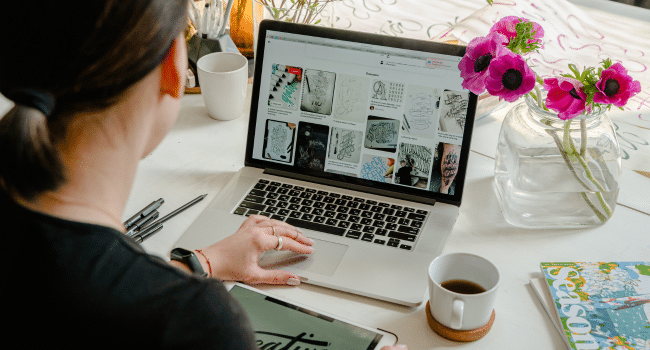Table of Contents
Web design involves the aesthetics of digital experiences and uses various tools and software programs to craft websites that express a brand’s message effectively. Web designers rely on their experience and skill sets in this endeavor.
Websites should always be refreshed and revamped to stay relevant, enhance user experience and increase performance. Making even small adjustments can have significant effects!
Importance of web design in user experience
Web design has an enormous effect on user experience, from its aesthetic appeal and usability, to ease of navigation and consistent branding. Conversely, poorly designed websites can have the opposite effect; leaving visitors frustrated and leaving quickly from frustration-induced websites – leading to lost business and potentially negative impacts on brand reputation.
According to Ajroni, a web design agency in Fort Lauderdale, prioritizing user experience can result in higher conversion rates, improved brand loyalty and greater customer satisfaction. To do so, best practices must be integrated into the design process, research must be carried out thoroughly and tested extensively, and feedback provided regularly so as to enhance website experiences based on these best practices.
An effective website design is key to any digital marketing strategy. Understanding its role in providing an unforgettable user experience and differentiating your business from competitors is paramount to creating one with lasting impression on visitors. By following these tips, you can design a captivating site that will leave an indelible mark with them.
Attention-grabbing visuals and layout
To attract users’ attention, websites need to look appealing and engaging. That is why it’s so essential that when designing business sites, both copy and design elements need to work in harmony; that way, an eye-catching and engaging business site can result.
One effective approach to this goal is using visual hierarchy, which involves setting priority for page elements based on their size, position and color. This technique guides visitors’ eyes so they see only important content first and then move on to less essential information.
Shapes can also help grab visitor’s attention. Geometric or organic, they serve to frame more organic designs like photographs or illustrations and highlight more detailed parts. Shapes may also be used to frame text, and even nudge users toward taking desired action by surrounding call-to-action buttons with them.
Clear navigation and intuitive interface
Web design involves crafting an interface that facilitates easy and efficient navigation through your website for visitors. Doing this helps reduce frustration while simultaneously increasing user satisfaction – giving visitors a great experience while exploring your content.
Maintain the clarity and legibility of navigation items by labeling them with clear, descriptive terms that won’t mislead users (e.g. ‘Learn More’). Provide feedback when users click or hover over buttons – perhaps changing color or animating accordingly.
Website speed is of utmost importance in providing users with a positive browsing experience, as slow websites can increase bounce rate and cause poor user experiences. A professional web design agency can assist in optimizing your site for speed as well as conducting usability testing to ensure it runs smoothly, creating customized navigation structures, optimizing for different devices and conducting ongoing maintenance services as needed.
Mobile responsiveness for seamless browsing experience
Website visitors who find your website easy to navigate are much more likely to subscribe to your newsletter or purchase products through your ecommerce platform, while frustrated readers and shoppers will quickly abandon websites which are difficult for mobile devices to use.
Responsive web design (RWD) has become an essential element of web development and design, enabling web designers and developers to build websites that work across devices without creating separate versions for each type of device.
RWD reduces HTTP requests a webpage makes, thus improving page loading times on mobile devices. Web designers can implement RWD using responsive design frameworks, minimizing images, optimizing fonts, and decreasing file sizes as part of RWD implementation; additionally testing and optimizing pages regularly will ensure an optimal mobile experience on their websites.
Effective use of color schemes and typography
An effective color palette is essential to creating the desired aesthetic in design, helping establish visual hierarchy and harmony. Typography also plays an integral part of design – particularly as more web traffic now comes through mobile devices than ever before.
Font style, size, and spacing can convey a particular mood or atmosphere. For example, serif fonts may exude elegance while sans-serif fonts may convey professionalism. Furthermore, adding distinctive fonts for headlines or specific design elements adds visual distinction and gives your design greater identity and presence.
White space is an integral element of web design. Whether intentionally created or left as natural occurrences, white space provides essential breathing room for visual elements on websites; without it, they could quickly become visually overwhelming and difficult to navigate.
Conclusion: Elevate your website with these tips
No matter if it’s your first website ever or just needing some tweaking, these professional web design tips will help you craft an attractive modern design that’s user-friendly. By applying these web design tricks to your site, it will attract more visitors – ultimately turning them into paying customers!
One of the least debated aspects of web design is how important page loading speed is. According to research, page speed has an enormously powerful influence over everything from bounce rates and user satisfaction levels, to conversion rates.
Your key to keeping website load times manageable lies in not overstuffing it with information. Instead, focus on highlighting only what’s most essential; use visual cues like underlined text and different colors to highlight these items; also try large images and bold headlines to draw user’s eyes directly to these sections and make reading them simpler.
Read more on KulFiy
Everything You Need to Know About User-Interface Design
